The Nature Conservancy
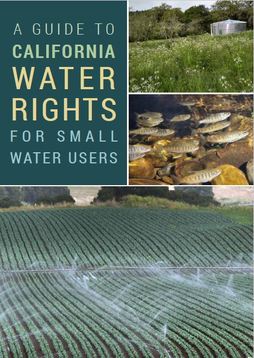
A Guide to California Water Rights for Small Water Users
California’s complex system of water rights makes it difficult to figure out what kind of water rights a water user has, let alone whether those rights would allow him or her to change their existing practices. In order to fix this problem, Trout Unlimited in partnership with The Nature Conservancy produced a guide to improve public awareness of how water can legally be taken from streams in California. This Guide to California Water Rights for Small Water Users provides a straightforward, easy to read introduction for small water users- typically rural residents or farmers that get their water from nearby wells, springs or streams and answers one basic question: Do I have a water right covering my existing or proposed water use and if not, do I need to obtain one from the State Water Resources Control Board? Download guide
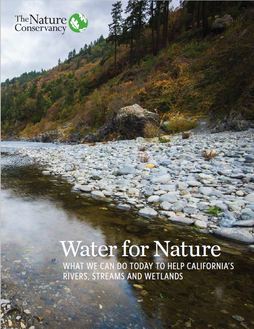
Water for Nature: What we can do today to help California’s rivers, streams and wetlands
The Nature Conservancy identified a set of strategies that will have the greatest impact on environmental flows, and to provide a resource for conservation organizations, resource agencies, and other stakeholders in California that will help create the conditions that allow salmon and other freshwater species to thrive well into the future. We evaluated existing strategies available in California to enhance environmental flows for nature, both for in-stream flows and for wetlands. For a select set of priority strategies, we also mapped the geographic potential for implementation, by identifying where the enabling conditions are right for a given strategy, and where the freshwater conservation benefits are highest. Download report
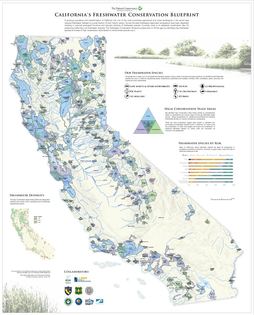
California’s Freshwater Conservation Blueprint
The transformation of California into one of the most productive agricultural and urban landscapes in the world and a growing population have put unprecedented pressure on freshwater habitats, reducing them to a small fraction of their historic extent. Across the state, freshwater-dependent ecosystems have been degraded, resulting in reduced ecological functions and dramatic declines of freshwater species. The Nature Conservancy identified key freshwater species and areas of high conservation value based on where these species occur. The Nature Conservancy and partners are developing a statewide conservation plan for preserving California’s rich freshwater diversity. Download report
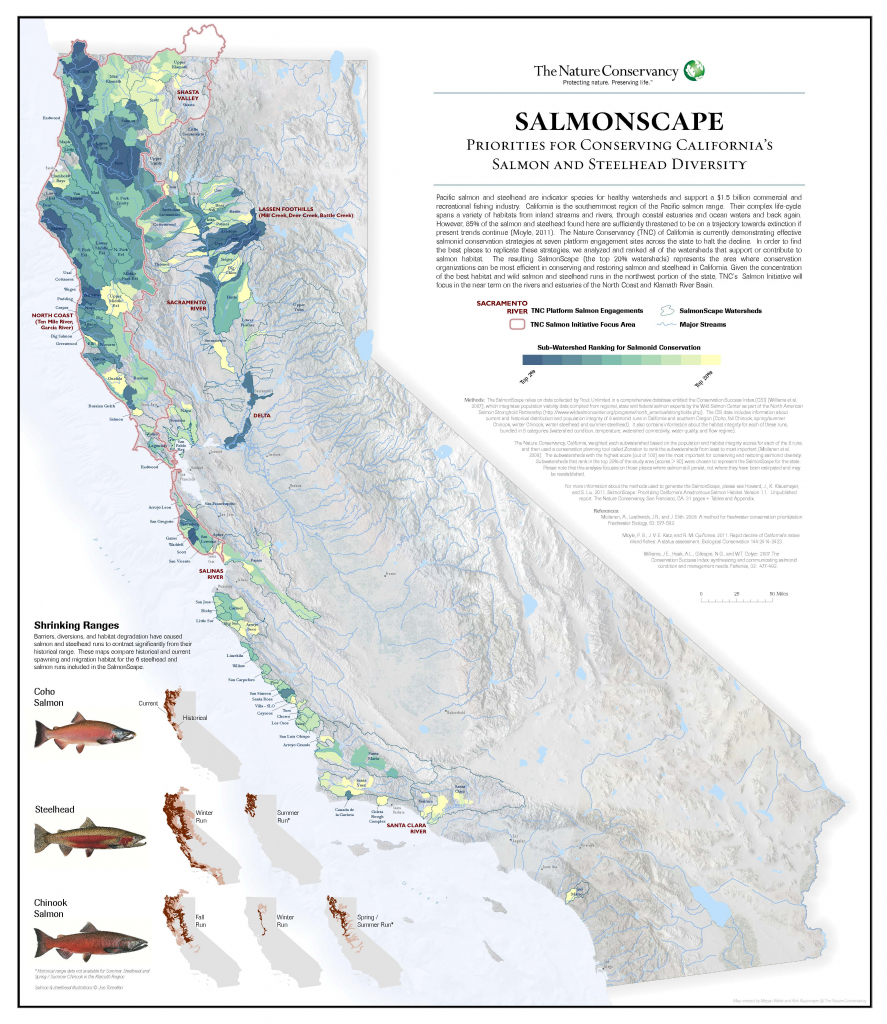
SalmonScape
The Nature Conservancy analyzed current Chinook, coho salmon, and steelhead trout population and habitat data across California to identify a portfolio of places we call the SalmonScape. View SalmonScape report.
SalmonScape identifies areas in California with the greatest potential for habitat restoration and protection, and where wild salmon also have the best chance of survival. Focusing resources in these priority watersheds will help maximize return on restoration and habitat protection investments. View SalmonScape map.
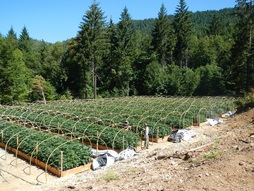
Marijuana: A Significant Environmental Challenge
Marijuana cultivation can have significant negative collateral effects on the environment that are often unknown or overlooked. TNC convened researchers to spotlight those impacts in a 2015 paper in the journal BioScience: High Time for Conservation: Adding the Environment to the Debate on Marijuana Liberalization. We are collaborating with a broad group of environmental interests to address those impacts by making the case for tightened regulations, beefed up enforcement of environmental laws, and restoration of damaged watersheds. Read more »
Our Restoration Approaches
Restore Healthy Estuaries
Estuaries and nearby floodplains provide critical habitat for salmon and steelhead, particularly in the winter. Improving estuaries and floodplains unlocks potential in an entire watershed, sometimes multiplying salmon productivity by several hundred percent. At the Ten-Mile River we are restoring estuary and floodplain habitat for juvenile and adult salmon. Learn more »
Promote a Voluntary Approach to Water Management
On Big Springs Creek near Mt. Shasta, TNC is developing innovative ways to use our water rights to ensure that there is enough water in streams to benefit both salmon and ranchers alike. Our Water Transactions Program and our 1707 Dedications demonstrate that water can be managed for the benefit of people and wildlife, and we are working to increase the use of these practices across the state. Learn more »
In Mill Creek on the south side of Lassen Volcanic National Park, TNC used our water rights to develop a voluntary water exchange agreement with the Los Molinos Mutual Water Company to increase fish passage flows during spring and fall and increase summer irrigation water. Learn more »
Put Wood Back in Creeks
In 2016, in the Ten Mile River watershed, our partners, Trout Unlimited, Redwood Timber Company, and Blencowe Watershed Management designed and installed another large wood project in 10 mile stretch of the South Fork Ten Mile River, using Coho HELP Act to expedite permitting. Learn more »
In the Garcia River watershed, The Conservancy demonstrated an inexpensive way to return wood to streams to create the natural habitat salmon need to thrive.